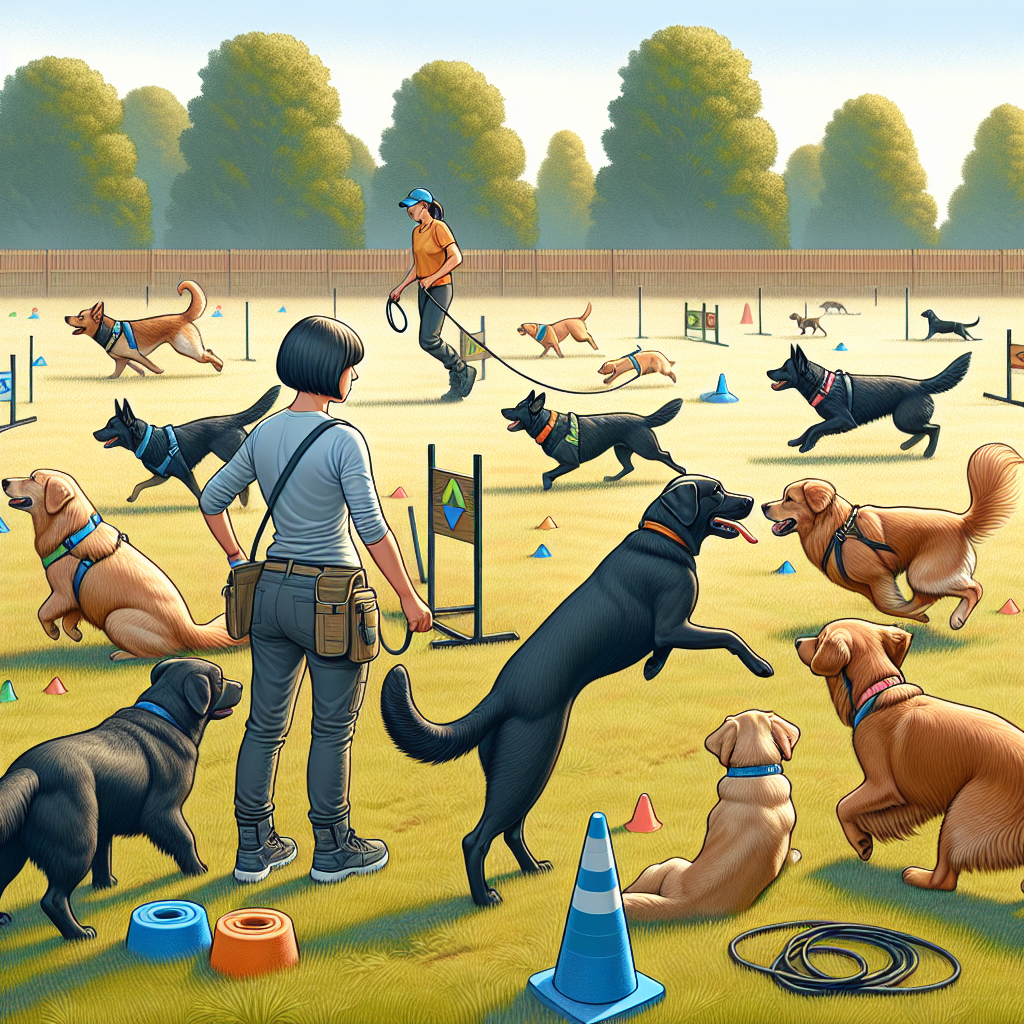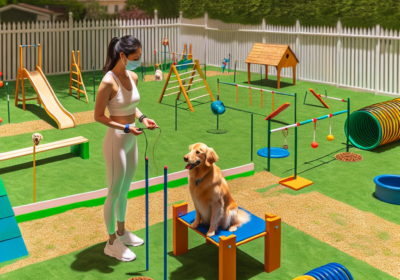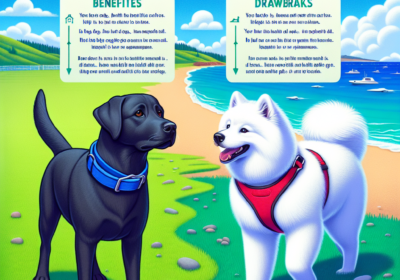Incorporating Canine Freework in Training for Rescue Dogs
Table of Contents
- Benefits Of Canine Freework For Rescue Dogs
- Success Stories: Rescue Dogs Thriving With Canine Freework
Incorporating Canine Freework in training for rescue dogs offers a transformative approach to rehabilitation and skill development. Canine Freework, a method that emphasizes natural behaviors and environmental exploration, provides a stress-free and enriching experience for dogs who have often faced trauma and uncertainty. By allowing rescue dogs to engage in self-directed activities, trainers can observe and understand individual needs, preferences, and stressors, facilitating tailored interventions. This approach not only enhances the dogs’ physical and mental well-being but also builds confidence and trust, essential components for successful rehoming and integration into new environments. Through Canine Freework, rescue dogs can rediscover their innate abilities and resilience, paving the way for a smoother transition to their forever homes.
Strengthening Trust Through Canine Freework
Canine freework, an innovative approach to dog training, has garnered attention for its profound impact on the human-canine bond. This method, which emphasizes allowing dogs to explore their environment freely and engage in natural behaviors, fosters a deeper connection between dogs and their owners. By prioritizing the dog’s autonomy and encouraging mutual trust, canine freework offers a unique pathway to strengthening the relationship between humans and their canine companions.
One of the primary benefits of canine freework is the enhancement of trust. Traditional training methods often rely on commands and structured activities, which can sometimes create a hierarchical dynamic. In contrast, freework allows dogs to make choices and explore at their own pace, which can lead to a more balanced and respectful relationship. When dogs are given the freedom to express themselves, they are more likely to feel secure and confident. This sense of security is crucial for building trust, as it reassures the dog that their owner respects their needs and instincts.
Moreover, canine freework encourages owners to become more attuned to their dog’s body language and behavior. By observing how their dog interacts with the environment, owners can gain valuable insights into their dog’s preferences, fears, and motivations. This heightened awareness fosters empathy and understanding, which are essential components of a strong bond. As owners learn to interpret their dog’s signals more accurately, they can respond in ways that reinforce positive behaviors and address any issues that may arise.
In addition to building trust, canine freework also promotes mental and physical well-being for both dogs and their owners. For dogs, the opportunity to explore and engage in natural behaviors can reduce stress and prevent boredom. This is particularly important for dogs that may be prone to anxiety or behavioral issues. By providing a stimulating and enriching environment, freework can help alleviate these problems and contribute to a happier, more balanced dog.
For owners, participating in canine freework can be a rewarding and fulfilling experience. It encourages them to spend quality time with their dog, which can strengthen the emotional connection between them. Furthermore, the process of observing and interacting with their dog in a freework setting can be a form of mindfulness, allowing owners to be present in the moment and appreciate the unique bond they share with their canine companion.
Another significant aspect of canine freework is its potential to improve communication between dogs and their owners. As dogs are given the freedom to express themselves, owners can learn to recognize and respond to their dog’s cues more effectively. This improved communication can lead to a more harmonious relationship, as both parties become more adept at understanding each other’s needs and desires. Over time, this mutual understanding can enhance cooperation and reduce conflicts, further solidifying the bond between human and canine.
In conclusion, canine freework offers a holistic approach to strengthening the human-canine bond by fostering trust, enhancing communication, and promoting well-being. By allowing dogs to explore their environment freely and engage in natural behaviors, this method encourages a more balanced and respectful relationship. As owners become more attuned to their dog’s needs and signals, they can build a deeper connection based on empathy and understanding. Ultimately, canine freework not only benefits the dog but also enriches the owner’s experience, creating a more fulfilling and harmonious partnership.
Benefits Of Canine Freework For Rescue Dogs

Incorporating Canine Freework in Training for Rescue Dogs
Canine Freework, a relatively novel approach in the realm of dog training, has been gaining traction for its numerous benefits, particularly for rescue dogs. This method emphasizes allowing dogs to explore their environment freely, engaging their senses and instincts in a controlled yet unstructured manner. The benefits of Canine Freework for rescue dogs are manifold, addressing both their physical and psychological needs, which are often neglected in traditional training methods.
One of the primary advantages of Canine Freework is its ability to reduce stress and anxiety in rescue dogs. Many rescue dogs come from backgrounds of neglect, abuse, or abandonment, leading to heightened levels of stress and anxiety. By allowing these dogs to explore their surroundings at their own pace, Canine Freework provides a sense of autonomy and control, which is crucial for their mental well-being. This method encourages dogs to engage with their environment in a way that feels safe and non-threatening, thereby gradually reducing their anxiety levels.
Moreover, Canine Freework fosters confidence and independence in rescue dogs. Traditional training methods often rely on strict commands and structured activities, which can be overwhelming for dogs with traumatic pasts. In contrast, Canine Freework allows dogs to make their own choices, promoting a sense of independence and self-assurance. This newfound confidence can significantly improve their ability to adapt to new environments and situations, making them more resilient and better equipped to handle the challenges of their new lives.
In addition to psychological benefits, Canine Freework also offers substantial physical advantages. Rescue dogs often suffer from physical ailments due to neglect or poor living conditions. Engaging in Freework activities encourages natural movement and exercise, which can help improve their physical health. For instance, navigating different terrains and obstacles can enhance their coordination and balance, while sniffing and exploring can stimulate their senses and cognitive functions. This holistic approach to physical activity ensures that rescue dogs receive the exercise they need without the pressure of structured training sessions.
Furthermore, Canine Freework can strengthen the bond between rescue dogs and their handlers. Building trust is a critical component of successful rehabilitation for rescue dogs, and Freework provides an excellent opportunity for this. By observing and understanding their dogs’ behaviors and preferences during Freework sessions, handlers can gain valuable insights into their needs and personalities. This mutual understanding fosters a deeper connection and trust, which is essential for effective training and rehabilitation.
Another significant benefit of Canine Freework is its adaptability. This method can be tailored to suit the individual needs and capabilities of each rescue dog, making it an inclusive and versatile training approach. Whether a dog is recovering from physical injuries or dealing with severe anxiety, Freework can be adjusted to accommodate their specific requirements. This flexibility ensures that all rescue dogs, regardless of their background or condition, can benefit from this innovative training method.
In conclusion, Canine Freework offers a myriad of benefits for rescue dogs, addressing both their psychological and physical needs. By reducing stress and anxiety, fostering confidence and independence, promoting physical health, strengthening the bond between dogs and handlers, and providing a flexible training approach, Canine Freework proves to be an invaluable tool in the rehabilitation and training of rescue dogs. As this method continues to gain recognition, it holds the promise of transforming the lives of countless rescue dogs, helping them to overcome their past traumas and thrive in their new homes.
Step-By-Step Guide To Implementing Canine Freework
Implementing canine freework can significantly enhance the bond between humans and their canine companions. This method, which emphasizes allowing dogs to explore and engage with their environment freely, can be introduced through a series of structured steps. By following these steps, dog owners can create a more enriching and fulfilling experience for their pets, ultimately strengthening their relationship.
To begin with, it is essential to select an appropriate environment for canine freework. Ideally, this should be a safe, enclosed area where the dog can explore without the risk of escaping or encountering potential hazards. This could be a secure backyard, a designated dog park, or even a spacious indoor area. The key is to ensure that the environment is stimulating yet safe, providing a variety of sensory experiences for the dog.
Once the environment is chosen, the next step involves setting up the space with various objects and obstacles that can pique the dog’s curiosity. These can include items such as tunnels, ramps, textured surfaces, and scent trails. The goal is to create a diverse and engaging environment that encourages the dog to use its senses and problem-solving skills. It is important to introduce these elements gradually, allowing the dog to become familiar with each new addition at its own pace.
As the dog begins to explore the environment, the role of the owner is to observe and support rather than direct. This means allowing the dog to make its own choices and engage with the objects and obstacles in its own way. The owner should remain calm and patient, providing positive reinforcement through verbal praise or treats when the dog demonstrates curiosity and engagement. This approach helps to build the dog’s confidence and fosters a sense of trust between the dog and its owner.
In addition to observing, the owner can also participate in the freework by interacting with the dog in a non-directive manner. This can involve mimicking the dog’s actions, such as sniffing or touching objects, to show that the owner is engaged and interested in the activity. This shared experience can enhance the bond between the dog and its owner, as it creates a sense of partnership and mutual enjoyment.
It is also important to vary the freework sessions to keep the experience fresh and exciting for the dog. This can be achieved by regularly changing the objects and obstacles in the environment, introducing new scents, or varying the location of the freework sessions. By keeping the activities diverse, the dog remains engaged and motivated, which further strengthens the bond with its owner.
Throughout the process, it is crucial to monitor the dog’s behavior and adjust the activities as needed. If the dog appears stressed or overwhelmed, it may be necessary to simplify the environment or reduce the duration of the sessions. Conversely, if the dog seems bored or disinterested, introducing new challenges or increasing the complexity of the activities can help to re-engage its interest.
In conclusion, implementing canine freework involves selecting a suitable environment, setting up engaging objects and obstacles, observing and supporting the dog’s exploration, participating in a non-directive manner, varying the activities, and monitoring the dog’s behavior. By following these steps, dog owners can create a positive and enriching experience for their pets, ultimately enhancing the human-canine bond. This method not only provides mental and physical stimulation for the dog but also fosters a deeper connection and mutual understanding between the dog and its owner.
Success Stories: Rescue Dogs Thriving With Canine Freework
Incorporating Canine Freework in Training for Rescue Dogs
Canine Freework, a relatively novel approach in the realm of dog training, has shown remarkable success in transforming the lives of rescue dogs. This method, which emphasizes allowing dogs to explore their environment freely and engage in natural behaviors, has proven to be particularly beneficial for dogs that have experienced trauma or neglect. By fostering a sense of autonomy and confidence, Canine Freework has facilitated numerous success stories, demonstrating its efficacy in helping rescue dogs thrive.
One of the primary advantages of Canine Freework is its ability to reduce stress and anxiety in rescue dogs. Many of these animals come from backgrounds where they have faced significant hardships, including abuse, abandonment, or prolonged periods in shelters. Traditional training methods, which often rely on strict commands and structured routines, can sometimes exacerbate these dogs’ anxieties. In contrast, Canine Freework allows dogs to make choices and engage with their surroundings at their own pace, thereby promoting a sense of security and well-being. For instance, a rescue dog named Bella, who had spent years in a high-stress shelter environment, exhibited remarkable improvements in her behavior and overall demeanor after just a few weeks of Canine Freework. Her newfound ability to explore and interact with her environment without pressure led to a noticeable reduction in her anxiety levels.
Moreover, Canine Freework has been instrumental in enhancing the socialization skills of rescue dogs. Many of these dogs have had limited positive interactions with humans or other animals, leading to social deficits that can hinder their adoption prospects. Through Canine Freework, dogs are encouraged to engage in natural social behaviors, such as sniffing, playing, and exploring alongside other dogs and humans. This approach not only helps them build trust but also improves their ability to communicate and interact appropriately. For example, Max, a rescue dog with a history of aggression towards other dogs, showed significant progress after participating in Canine Freework sessions. By allowing him to interact with other dogs in a controlled yet unstructured environment, Max gradually learned to navigate social situations more calmly and confidently.
Furthermore, Canine Freework has been shown to enhance the cognitive abilities of rescue dogs. Engaging in activities that stimulate their senses and challenge their problem-solving skills can lead to improved mental acuity and adaptability. This is particularly important for rescue dogs, as they often need to adjust to new environments and routines when they are adopted. A case in point is Daisy, a rescue dog who struggled with adapting to her new home. Through Canine Freework, she was exposed to various sensory experiences and problem-solving tasks, which not only kept her mentally stimulated but also helped her become more adaptable and resilient.
In addition to these benefits, Canine Freework has also been praised for its role in strengthening the bond between rescue dogs and their new owners. By participating in these activities together, owners and dogs can develop a deeper understanding and trust. This bond is crucial for the successful integration of rescue dogs into their new families. For instance, Charlie, a rescue dog with a history of mistrust towards humans, formed a strong bond with his new owner through regular Canine Freework sessions. This bond was instrumental in his successful transition to his new home.
In conclusion, the incorporation of Canine Freework in the training of rescue dogs has yielded numerous success stories, highlighting its potential to transform the lives of these animals. By reducing stress, enhancing socialization, improving cognitive abilities, and strengthening the human-animal bond, Canine Freework offers a holistic approach that addresses the unique needs of rescue dogs. As more trainers and rescue organizations adopt this method, it is likely that we will continue to see more rescue dogs not only surviving but truly thriving in their new homes.
Read more about Canine Freework
Canine Freework and Bonding with Your Dog
– Building Trust and Communication with Canine Freework
– Positive Effects of Canine Freework on the Human-Canine Bond
– Incorporating Canine Freework in Training for Rescue Dogs
– Canine Freework for Dogs with Behavioral Issues
– Creating a Stronger Connection with Your Dog through Canine Freework







![The Dog Podcast Uncovers Startling Truths About What We Feed Our Dogs [Press Release]](https://yourhomeandgardenhub.com.au/wp-content/uploads/2024/08/dog-bowl-400x280.webp)


